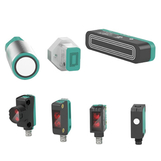Smart Sensor Profile Edition 2—Finding a Common Denominator in IO-Link

Even though there is a wide variety of IO-Link sensors currently available, like those offered by Pepperl+Fuchs, they share many functional similarities (identification, diagnosis, process data variables, switching signal channel, teach-in). Smart Sensor Profiles make use of these similarities. The second edition of these profiles makes it possible to better control the diverse components so IO-Link sensors can be integrated faster and more flexibly than ever before.
Three Additional Sensor Types
The latest expansion of sensor profiles contains the following cross-technology sensor classifications due to their wide distribution:
- Fixed switching sensors (FSS)—binary sensors with fixed switch point
- Adjustable switching sensors (AdSS)—binary sensors with adjustable switch point
- Digital measuring sensors (DMS)—measuring sensors
All profile devices follow the specifications of the “common profile” and generally support the “identification and diagnosis” profile defined there. This profile contains relevant identification data and general diagnostic information about the current device status. The profile classes mentioned above can be combined with the “transducer disable” function, whereby the sensor function can be brought to a controlled stop via process data, e.g. for maintenance. In addition to these functions, profile devices can also provide extended, manufacturer-specific functions.
Simplified Integration and Operation of IO-Link Sensors
The second edition of Smart Sensor Profiles offers new advantages. Settings are made using the same parameters, setting values have the same meaning, and process values can be interpreted uniformly. The main advantage is that the different profile classes are defined by a fixed range of functions. Furthermore, function modules are specified for each of the profile classes of the Smart Sensor Profiles. The names of the parameters, the adjustable values, and the diagram in the IOOD device description are also uniformly defined.
The benefits are obvious. The similarity of functions and interfaces makes integration and handling easier.
- Flexibility: Profile device functions are easily interchangeable, so there is leeway during planning. This creates flexibility in the face of manageable risks.
- Time savings: The devices can be configured and parameters set according to uniform schematics during commissioning. This is supported by the uniform naming and structure of the parameters displayed in the engineering tool.
- Reduced effort: Simple for application programmers because of the availability of reference implementations and standardized function modules.
The Next Step Towards Standardization

Pepperl+Fuchs offers a wide range of Smart Sensors with an IO-Link interface. From photoelectric light barriers, light grids, distance sensors, and ultrasonic sensors to inductive position measurement systems—they all combine the advantages of IO-Link and increase the efficiency of your plant processes ...










 +90 216 577 2250
+90 216 577 2250